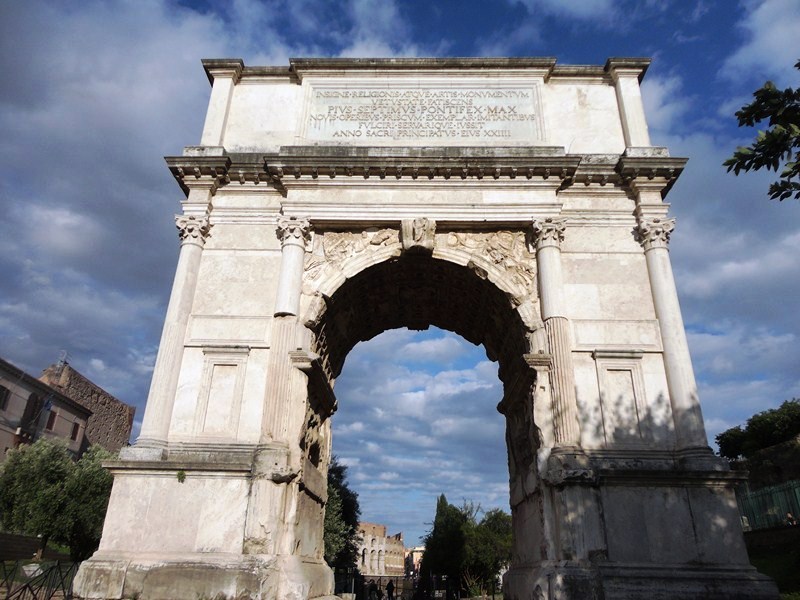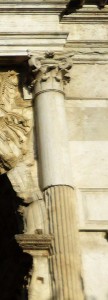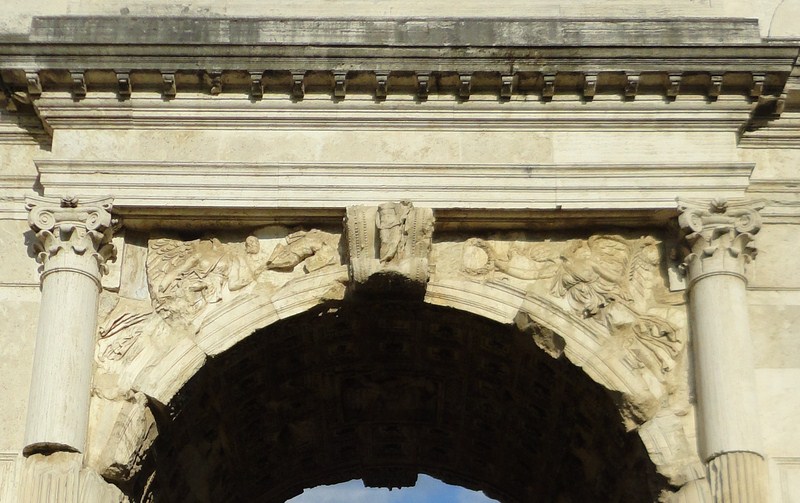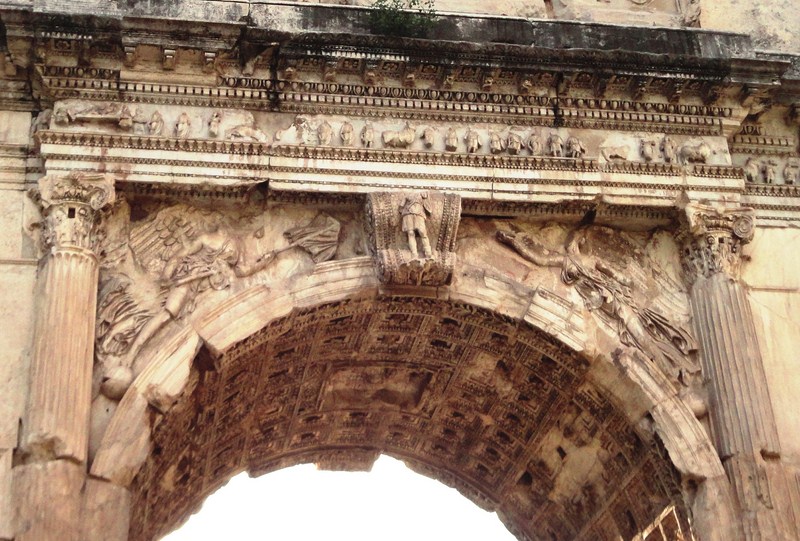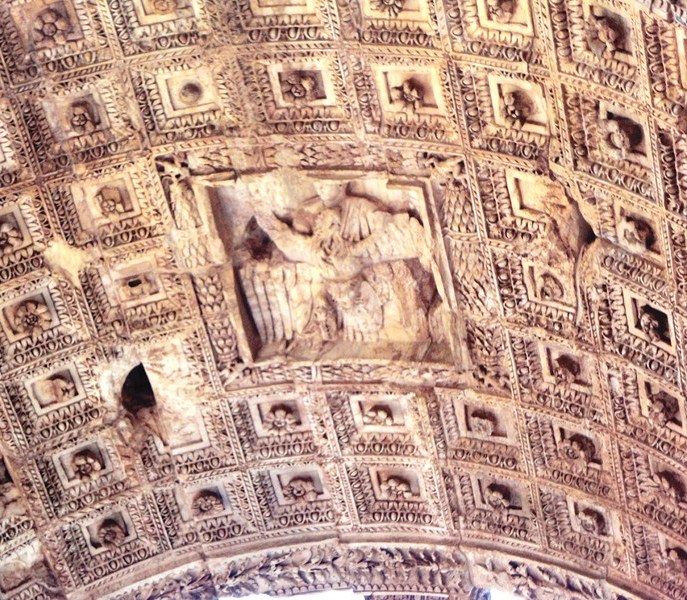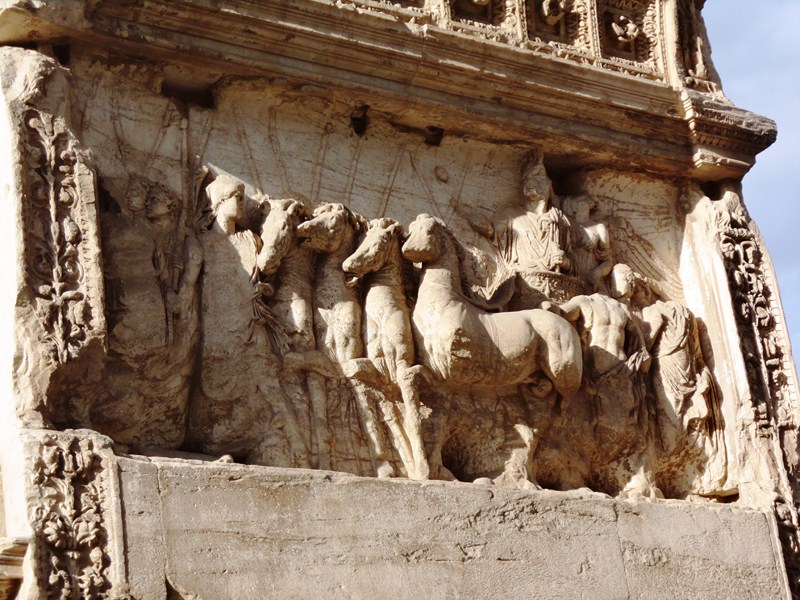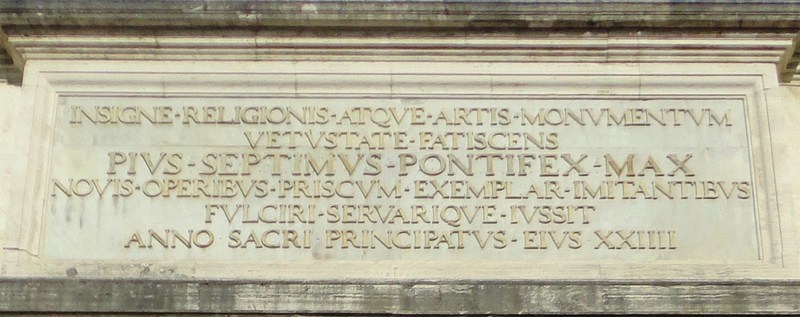The Arch of Titus (Italian: Arco di Tito; Latin: Arcus Titi), located just to the southeast of the Roman Forum, is one of the most celebrated monuments in the Forum Romanum. This honorific arch was constructed from A.D. 82 – 85 by Emperor Domitian, shortly after the death of his older brother Titus (who died suddenly during a plague A.D. 81, after only a two year reign), to commemorate the immensely popular Titus’ victories, including the Siege of Jerusalem (70 CE).
Since the 16th century, this 1st-century A.D. arch has provided the general model for many triumphal arches erected. Perhaps, most famously, it is the inspiration for the Arc de Triomphe (which maintains the exact proportions of the Arch of Titus, though several times larger), in Paris, France. Domitian‘s favored architect Rabirius, sometimes credited with the Colosseum, may have executed the arch based on the style of sculptural details.
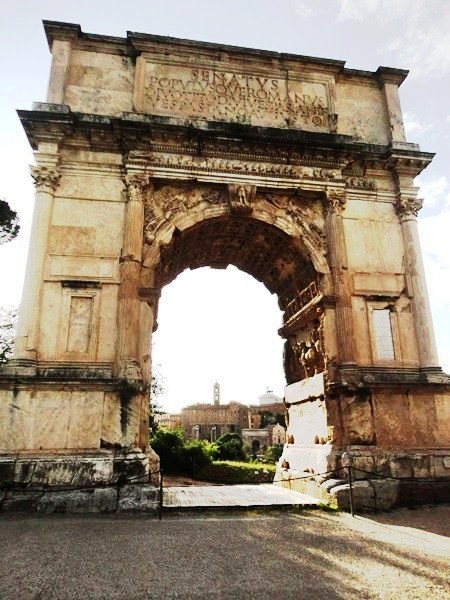 The large 15 m. high arch has both fluted and distinguishably unfluted columns, the latter being a result of modern restoration, starting with Raffaele Stern in 1817 and continued in 1821 by architect Giuseppe Valadier, under Pope Pius VII (with new capitals, new inscriptions on the opposite side, and restoration intentionally made in travertine masonry to differentiate between the original and the restored portions).
The large 15 m. high arch has both fluted and distinguishably unfluted columns, the latter being a result of modern restoration, starting with Raffaele Stern in 1817 and continued in 1821 by architect Giuseppe Valadier, under Pope Pius VII (with new capitals, new inscriptions on the opposite side, and restoration intentionally made in travertine masonry to differentiate between the original and the restored portions).
Winged women, personifications of victory, are found at the spandrels on the upper left and right of the arch. They stand on a globe and hold banners, trophies, laurel wreaths, and palm fronds. The keystone, between the spandrels, has a female on the east side and a male on the west side, both representing Roma and the Genius of the Roman people.
The deeply coffered soffit of the axial archway has, at the center, a relief of the apotheosis of Titus, showing him riding an eagle to heaven, where he’ll become one of the gods. Two 2.04 m high by 3.85 m long panel reliefs, commemorating the joint triumph celebrated by Titus and his father Vespasian in the summer of 71, line the passageway within the arch.
The south panel (likely originally colored gold, with the background in blue) depicts the triumphal procession as it passes through the Porta Triumphalis to the Forum Boarium, with the participants carrying booty taken from the Temple in Jerusalem (one of the few contemporary depictions of Temple period artifacts).
It features a golden 7-branched Menorah (candelabrum), carved in deep relief, as the main focus plus other sacred objects being carried in the procession such as the Gold Trumpets, fire pans (for removing the ashes from the altar), the Table of Shew bread and, perhaps, even the Ark of the Covenant. In 2012, remains of yellow ocher paint on the menorah relief were discovered by the Arch of Titus Digital Restoration Project. The menorah depicted on the Arch, later to become a symbol of the Jewish diaspora, served as the model for the menorah used on the emblem of the state of Israel.
The north panel depicts Titus as triumphator, attended by various genii and lictors that carry fasces. The quadriga (four-horsed chariot) carrying Titus, crowned with a laurel wreath by a winged Victory, is lead by Valour, a helmeted Amazon holding the bridle of one of the horses. The two figures to the right of the chariot personify the people of Rome (naked torso) and the Senate (wearing a toga).
Significant as one of the first examples of divinities and humans being present in one scene together, it contrasts with the panels of the Ara Pacis, where humans and divinities are separated. It is also the first full attempt by Roman sculptors to create the illusion of space.
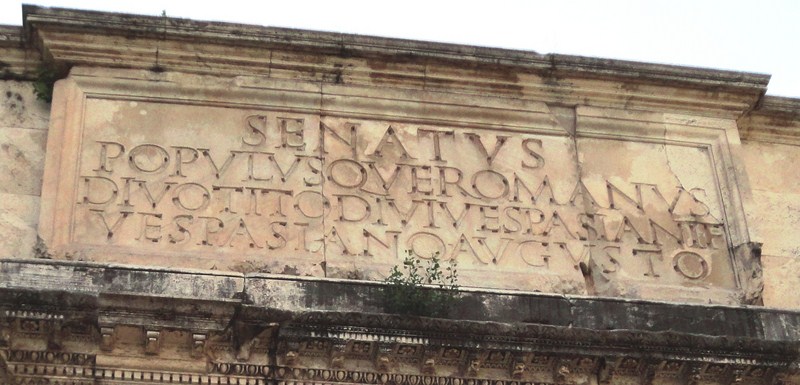
“The Roman Senate and People (dedicate this) to the divine Titus Vespasianus Augustus, son of the divine Vespasian.”
In the Middle Ages, when the Frangipani family turned it into a fortified tower, the sculpture of the outer faces of the two great piers was lost when the arch was incorporated in medieval defensive walls. The attic of the arch was originally crowned by more statuary, perhaps of a bronze quadriga, and the main inscription used to be ornamented by letters made of perhaps silver, gold or some other metal.

